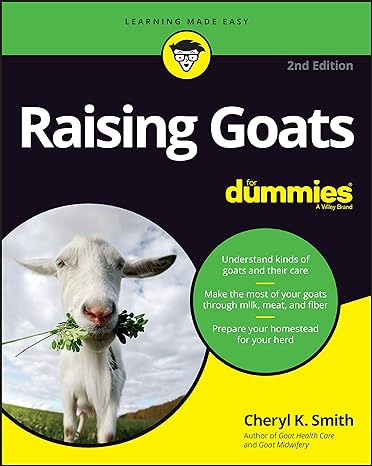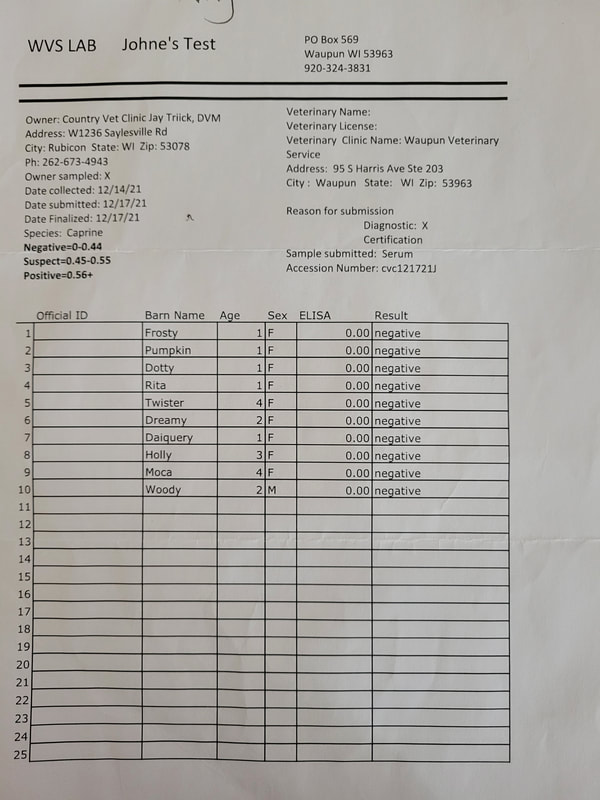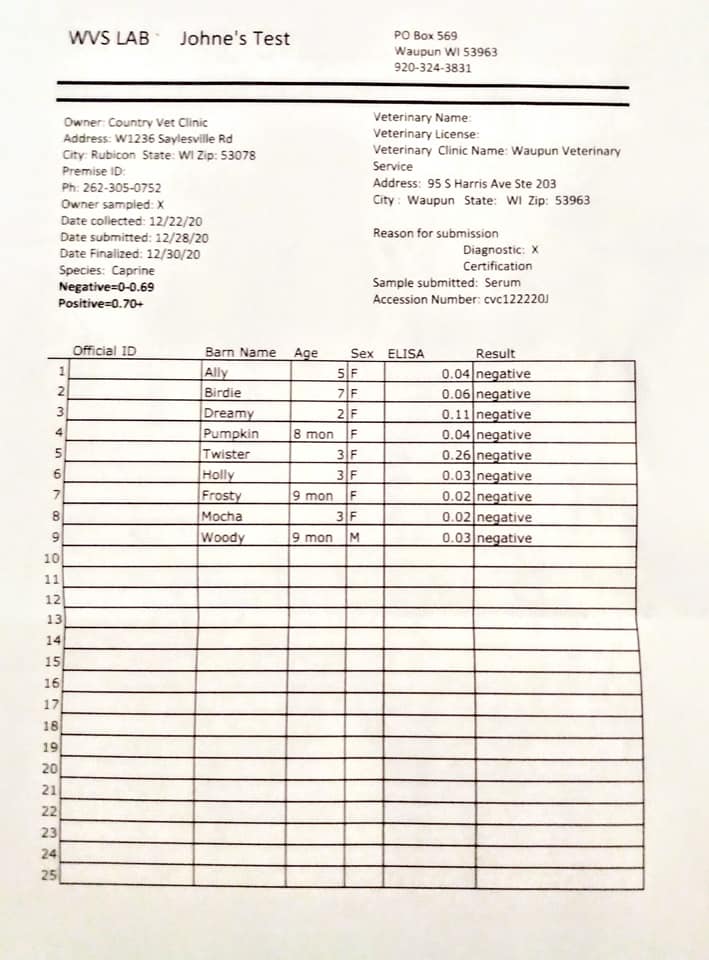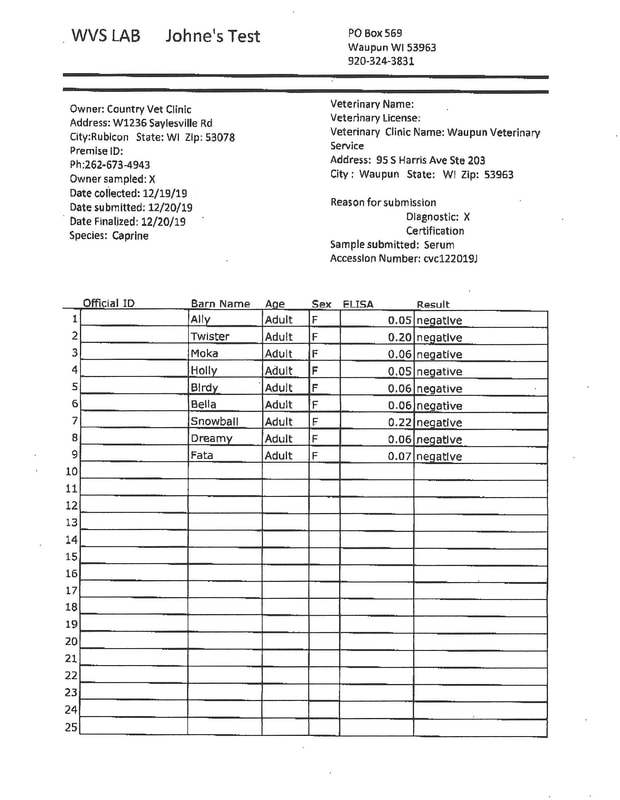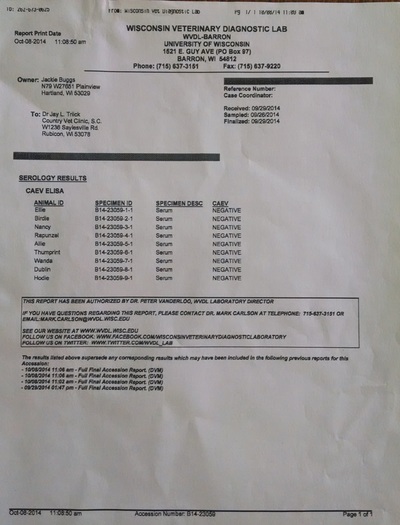Books
Every animal is different, and every herd has different dynamics they are working with. I am going to explain how we do things here as a reference for others to work off of. We are always learning and tweaking our practices as our herd and our knowledge grow!
Feed
All goats have free choice orchard grass or grass/alfalfa mix hay and browse available on a daily basis. Fresh and clean water is a must and is also always available.
Bottle Feeding:
We pull the babies from their dams at birth and bottle feed for CAE prevention. The first 2 days they receive their own dam's colostrum or colostrum replacer. After the second day they receive pasteurized goat milk. If the dam is not producing enough milk we will supplement with whole cows milk. I can not recommend milk replacers as I personally do not have experience with them and the people that I know that have used them have had bad experiences.
Bottle Feeding Schedule:
The information below is based on feeding a normal sized Nigerian Dwarf kid that was born weighing approximately 3 pounds. The values are based on the goal of feeding 25% of their body weight in milk each day. At about 4 weeks the babies seem to normally be eating grain, water and hay. Their bellies seem to be pretty full before we even begin to offer them their bottle.
Day 1- Kids must get colostrum within the first 6 hours of life. At a minimum, the kids need 1 ounce of colostrum per pound of bodyweight at each of 3 feedings during the first 24 hours. If you can, offer colostrum every 4 hours- as much as the dam makes- split between the kids.
Day 2-7- 12-16 oz per day, split between 4 feedings
Week 2- 21 oz per day, split between 3 feedings
Week 3- 24 oz per day, split between 3 feedings
Week 4- 30 oz per day, split between 3 feedings
Week 5- 36 oz per day, split between 3 feedings
Week 6- 24 oz per day, split between 2 feedings
Week 7- 24 oz per day, split between 2 feedings
Week 8- 12 oz at 1 feeding
After week 8 you may stop bottle feeding if the baby is drinking water and eating well.
Week 9-12, 12 oz at 1 feeding
We feed McNess brand goat pellets to our goats.
Kids under 6 months: We feed Complete Goat Starter with Deccox for coccidiosis control and ammonium chloride for prevention of urinary calculi. It is available free choice.
Dry Goats 6 month and older: Goats get 1/2 pound of Kid Grower Pellets once per day, but amount can vary based on weight and condition of the goat.
Lactating Goats: We feed Lactating Goat Pellets in addition to Black Oil Sunflower Seeds on the milk stand.
Bucks: Goats get 1/2 pound of Kid Grower Pellets once per day, but amount can vary based on weight and condition of the goat.
Feed
All goats have free choice orchard grass or grass/alfalfa mix hay and browse available on a daily basis. Fresh and clean water is a must and is also always available.
Bottle Feeding:
We pull the babies from their dams at birth and bottle feed for CAE prevention. The first 2 days they receive their own dam's colostrum or colostrum replacer. After the second day they receive pasteurized goat milk. If the dam is not producing enough milk we will supplement with whole cows milk. I can not recommend milk replacers as I personally do not have experience with them and the people that I know that have used them have had bad experiences.
Bottle Feeding Schedule:
The information below is based on feeding a normal sized Nigerian Dwarf kid that was born weighing approximately 3 pounds. The values are based on the goal of feeding 25% of their body weight in milk each day. At about 4 weeks the babies seem to normally be eating grain, water and hay. Their bellies seem to be pretty full before we even begin to offer them their bottle.
Day 1- Kids must get colostrum within the first 6 hours of life. At a minimum, the kids need 1 ounce of colostrum per pound of bodyweight at each of 3 feedings during the first 24 hours. If you can, offer colostrum every 4 hours- as much as the dam makes- split between the kids.
Day 2-7- 12-16 oz per day, split between 4 feedings
Week 2- 21 oz per day, split between 3 feedings
Week 3- 24 oz per day, split between 3 feedings
Week 4- 30 oz per day, split between 3 feedings
Week 5- 36 oz per day, split between 3 feedings
Week 6- 24 oz per day, split between 2 feedings
Week 7- 24 oz per day, split between 2 feedings
Week 8- 12 oz at 1 feeding
After week 8 you may stop bottle feeding if the baby is drinking water and eating well.
Week 9-12, 12 oz at 1 feeding
We feed McNess brand goat pellets to our goats.
Kids under 6 months: We feed Complete Goat Starter with Deccox for coccidiosis control and ammonium chloride for prevention of urinary calculi. It is available free choice.
Dry Goats 6 month and older: Goats get 1/2 pound of Kid Grower Pellets once per day, but amount can vary based on weight and condition of the goat.
Lactating Goats: We feed Lactating Goat Pellets in addition to Black Oil Sunflower Seeds on the milk stand.
Bucks: Goats get 1/2 pound of Kid Grower Pellets once per day, but amount can vary based on weight and condition of the goat.
Supplements
Minerals-
Goats need to have some sort of mineral supplement.
We are now using Replamin Gel instead of loose minerals.
Copper Bolus- We give a 2 mg or 4mg copper bolus 2 times per year.
BOSE-
BOSE is an injectable selenium supplement. We live in a selenium deficient area and supplement at least twice per year with BOSE.
BOSE is available by prescription from you vet.
Minerals-
Goats need to have some sort of mineral supplement.
We are now using Replamin Gel instead of loose minerals.
Copper Bolus- We give a 2 mg or 4mg copper bolus 2 times per year.
BOSE-
BOSE is an injectable selenium supplement. We live in a selenium deficient area and supplement at least twice per year with BOSE.
BOSE is available by prescription from you vet.
General Health
Deworming-
We have fecals checked for worms once per year after kidding. Goats will be dewormed as needed with the appropriate dewormer.
Where to send samples: http://www.midamericaagresearch.net/instructions.php
Which dewormer to use: http://media.wix.com/ugd/6ef604_cb00c912701c4b79b66807932c3f02e2.pdf
Hoof Trimming-
Hoof trimming is done as needed. Usually we do them about 1x per month.
Here is the hoof trimmer we use: http://hoeggerfarmyard.com/xcart/SUPER-DUTY-HOOF-TRIMMERS.html
CD&T Shots-
Kids will get a 2 cc CD&T shot at 4 weeks old and 8 weeks old before leaving our farm. Does will get a 2 cc CD&T shot one month before kidding. Bucks get a 2 cc CD&T shot in spring.
Disease Testing-
We only purchase goats from clean and tested herds. We have never had a CL abscess in our herd.
Goats tested for CAE and Johnes annually. See results below.
http://johnes.org/
Disbudding-
All kids will be disbudded. We will not sell an animal with horns.
Links to various goat pages and info:
Goat Raising and Production
http://www.dairygoatjournal.com/goats/dairy_goat_production_guide/
Feeding for Production:
http://www.milkproduction.com/Library/Scientific-articles/Other-milking-animals/Feeds-and-nutrition/
http://www.wrightsfeeds.ca/wp-content/uploads/2011/02/Feeding-and-Management-of-dairy-Goats.pdf
Technical Version Calculators | Agricultural Research (luresext.edu)
Milk Withdrawal Times:
http://cherokee.ces.ncsu.edu/wp-content/uploads/2013/11/Goats-Dewormers-Withdrawal-Times-Table-11-27-13.pdf?fwd=no
Disbudding Tutorial:
http://goatcaretips.weebly.com/
2022 CAE and Johnes Test Results
2021 CAE and Johnes Test Results
2020 CAE and Johnes Test Resuts
2019 CAE and Johnes Test Results
2018 CAE and Johnes Test Results
2017 CAE and Johnes Test Results
2016 CAE and Johnes Test Results
2015 CAE and Johnes Test Results and Scrapie Info


